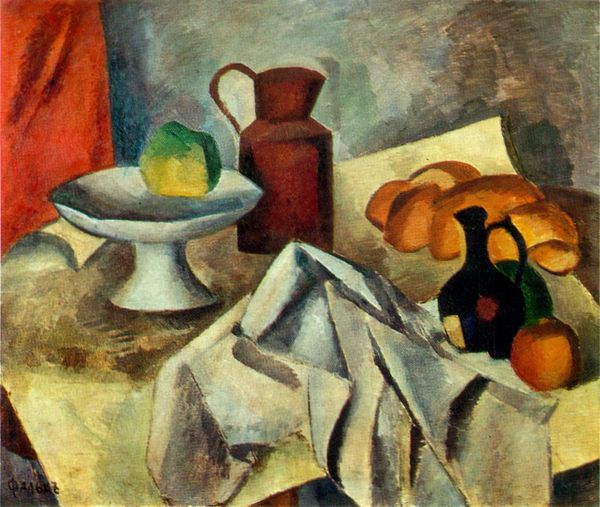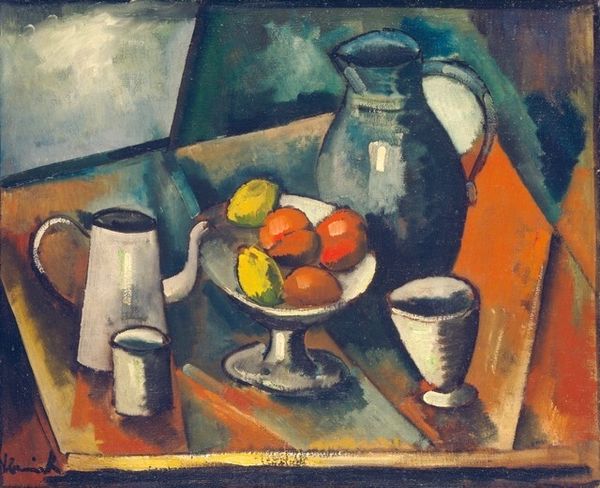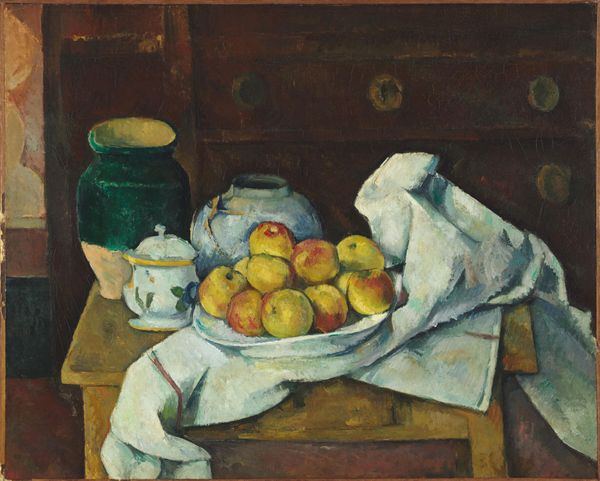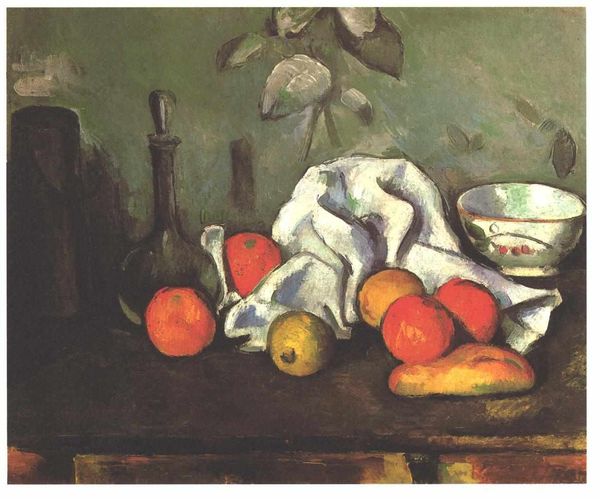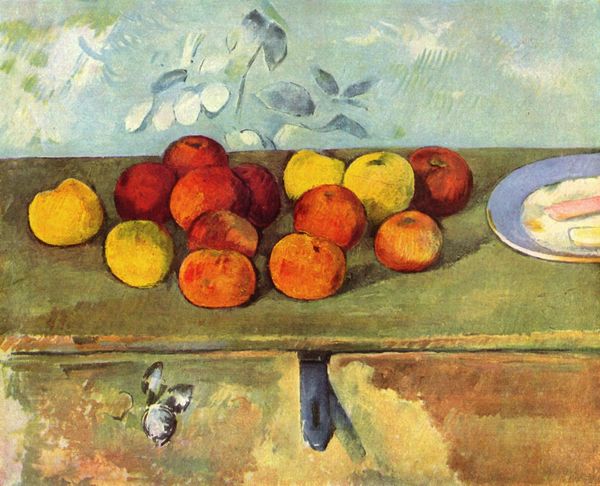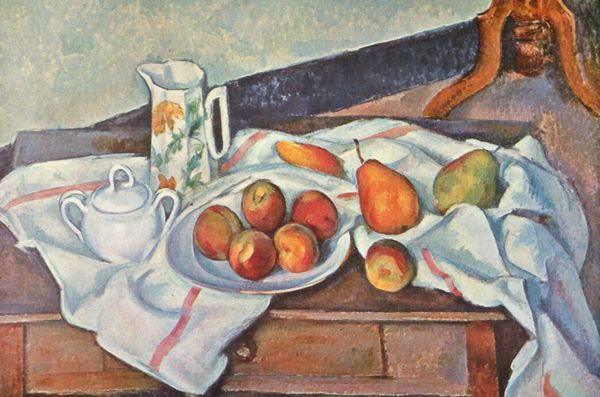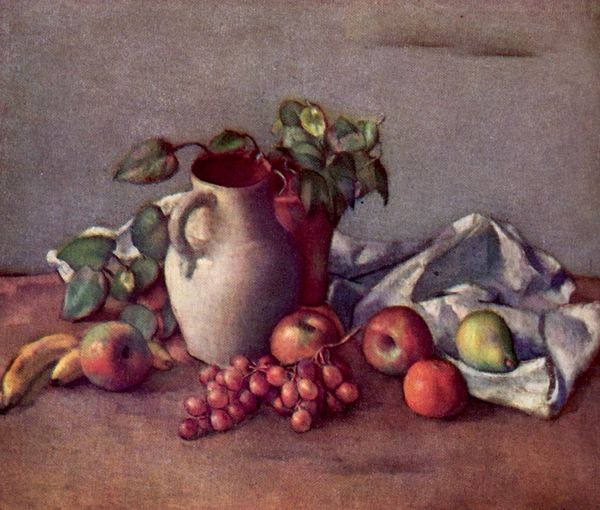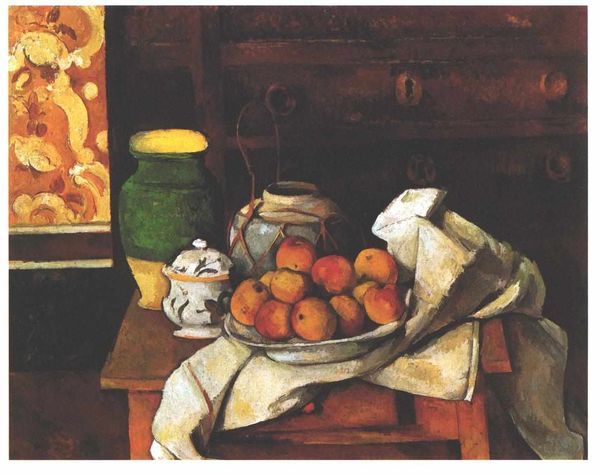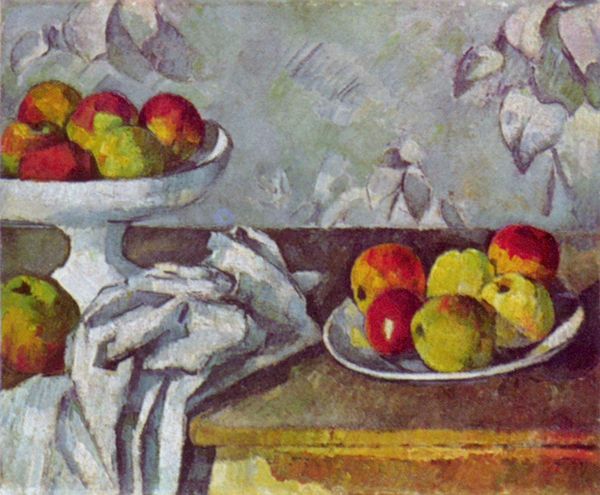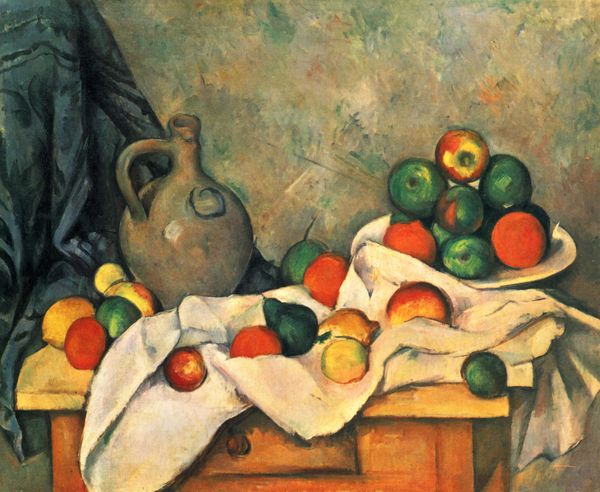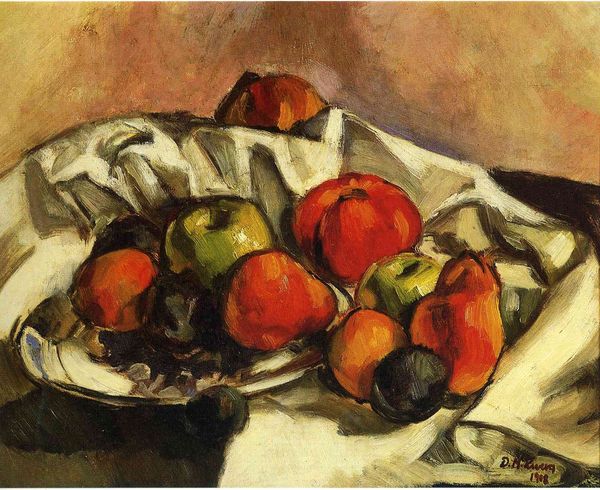
oil-paint, impasto
#
still-life
#
oil-paint
#
figuration
#
oil painting
#
impasto
#
expressionism
#
modernism
Copyright: Public domain US
Curator: At first glance, there's a rather somber mood radiating from Robert Falk's "Still Life with a Ficus," painted in 1913. A weighty composition, isn’t it? Editor: Indeed. Falk's arrangement presents us with more than meets the eye. Note the impasto technique, where thick layers of oil paint lend a textural richness and depth, almost sculptural in quality, particularly in the rendering of the ficus leaves and the folds of that vibrant cloth. The materiality is inescapable! Curator: Speaking of the fabric, the colour palette is rather interesting, isn't it? That deep red resonates across time, referencing the Renaissance "still life" tradition but also a distinctly modernist interpretation thereof. The way it supports that lonely lemon feels loaded with implied narrative. Editor: Yes, but consider also the Freudian reading—the arrangement itself becomes symbolic. The phallic shape of the ficus stands erect beside the smooth contours of the vase, a stark juxtaposition to the softness of the fruit on the table, all hinting towards underlying psycho-sexual tensions, reflective perhaps of the artistic milieu of pre-war Europe. Curator: Don’t overlook the influence of Russian avant-garde thinking either. I see strong elements of expressionism here: Observe how colour is used to create jarring contrasts; for instance, the nearly black eggplant adjacent to the vibrant lemon serves as a device to emphasize the inherent tensions within the work. Editor: True. These objects—the plant, the fruits, even the drab pitcher—each holds symbolic weight. Consider the ficus, a symbol of domesticity, of bourgeois stability perhaps undermined by the precarious balance of the fruits, which hint towards entropy and decay. Falk juxtaposes order with chaos. Curator: Ultimately, this "Still Life" exists as more than just a depiction of fruit, foliage, and a pitcher, as rendered in oils. We must consider its formal structure, those colours. Each colour and choice builds this intricate visual structure. Editor: And through its intricate layers of symbolism, Robert Falk encourages us to reflect on cultural expectations and underlying desires inherent in a world on the brink of significant transformation. Curator: Indeed, looking deeper, we gain a glimpse of an internal landscape mirroring external disruption. Editor: An enduring glimpse, precisely because Falk grasped the essence of things.
Comments
No comments
Be the first to comment and join the conversation on the ultimate creative platform.
